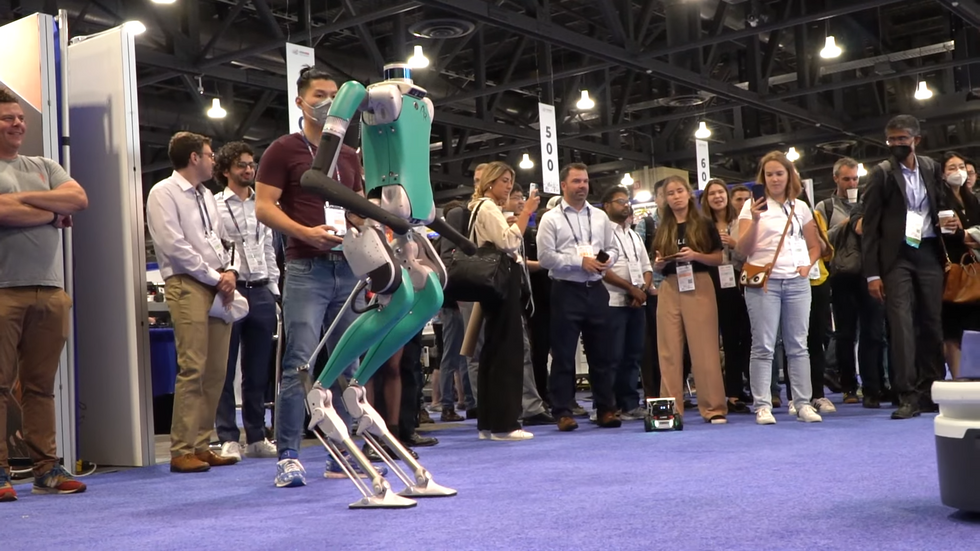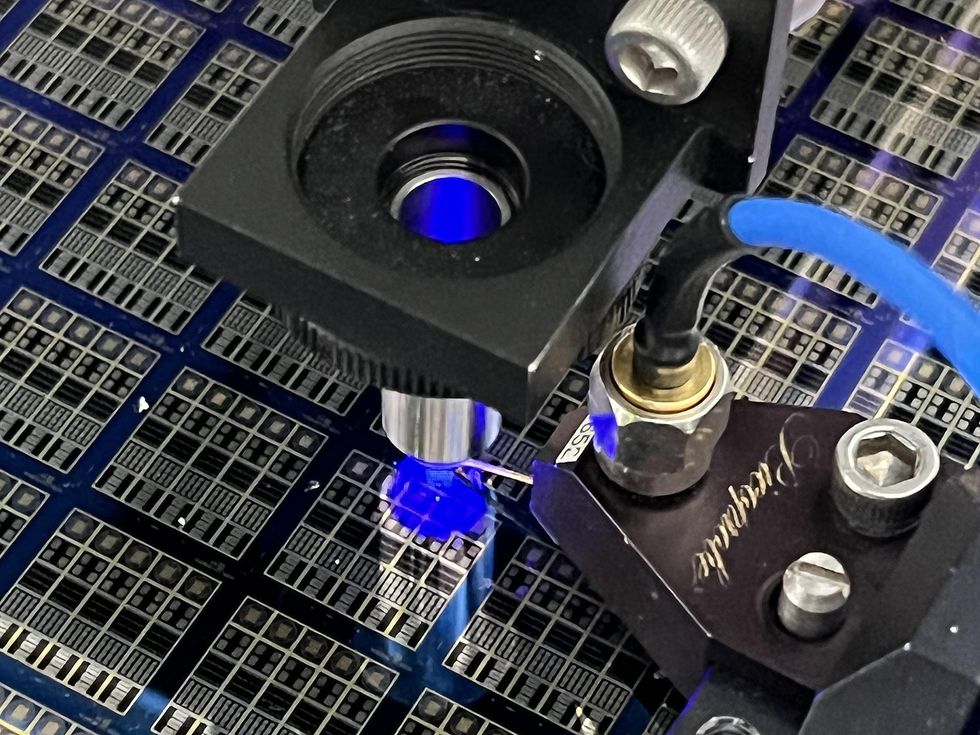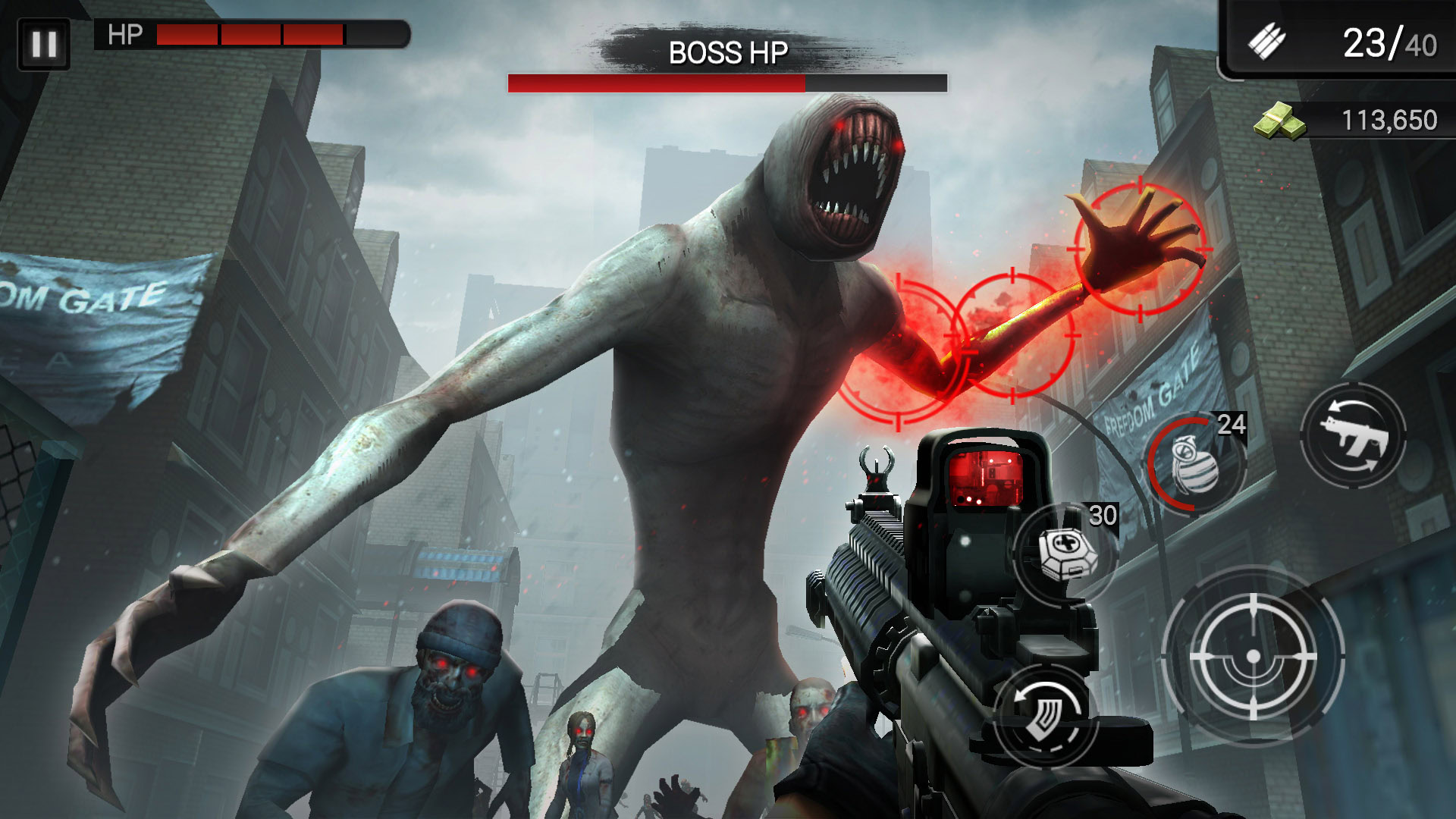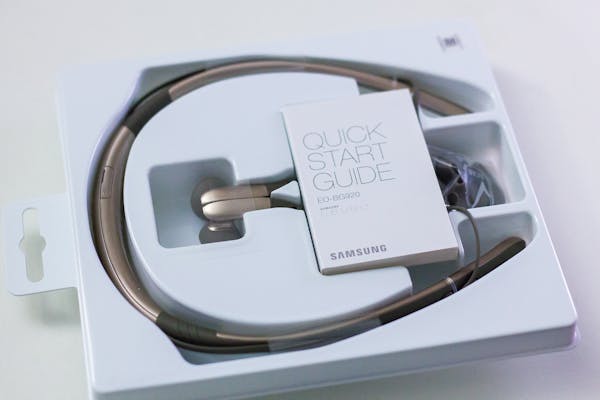Video Friday: ICRA 2022 – IEEE Spectrum
[ad_1]

The skill to make conclusions autonomously is not just what will make robots beneficial, it’s what tends to make robots
robots. We benefit robots for their potential to perception what is going on close to them, make choices based on that information and facts, and then consider practical actions devoid of our enter. In the earlier, robotic selection creating adopted extremely structured rules—if you feeling this, then do that. In structured environments like factories, this works effectively enough. But in chaotic, unfamiliar, or poorly defined options, reliance on rules makes robots notoriously lousy at working with anything at all that could not be specifically predicted and prepared for in progress.
RoMan, together with quite a few other robots like residence vacuums, drones, and autonomous vehicles, handles the issues of semistructured environments by way of synthetic neural networks—a computing tactic that loosely mimics the structure of neurons in organic brains. About a 10 years ago, synthetic neural networks commenced to be used to a broad wide range of semistructured information that had previously been pretty complicated for personal computers operating policies-centered programming (commonly referred to as symbolic reasoning) to interpret. Rather than recognizing distinct details constructions, an synthetic neural network is able to recognize knowledge styles, pinpointing novel details that are related (but not identical) to details that the community has encountered before. In fact, component of the enchantment of artificial neural networks is that they are experienced by instance, by permitting the network ingest annotated data and understand its individual procedure of sample recognition. For neural networks with a number of layers of abstraction, this strategy is named deep understanding.
Even however humans are commonly involved in the schooling course of action, and even even though artificial neural networks have been impressed by the neural networks in human brains, the form of pattern recognition a deep understanding procedure does is basically distinctive from the way individuals see the planet. It truly is generally nearly impossible to realize the romance between the knowledge input into the method and the interpretation of the information that the procedure outputs. And that difference—the “black box” opacity of deep learning—poses a possible dilemma for robots like RoMan and for the Military Exploration Lab.
In chaotic, unfamiliar, or improperly outlined settings, reliance on guidelines would make robots notoriously bad at dealing with anything at all that could not be specifically predicted and planned for in progress.
This opacity implies that robots that depend on deep learning have to be utilized cautiously. A deep-mastering program is excellent at recognizing designs, but lacks the environment being familiar with that a human generally utilizes to make decisions, which is why this sort of programs do finest when their applications are effectively outlined and slender in scope. “When you have nicely-structured inputs and outputs, and you can encapsulate your trouble in that form of romantic relationship, I think deep studying does quite perfectly,” claims
Tom Howard, who directs the College of Rochester’s Robotics and Artificial Intelligence Laboratory and has produced natural-language conversation algorithms for RoMan and other floor robots. “The dilemma when programming an smart robot is, at what practical size do those people deep-discovering making blocks exist?” Howard clarifies that when you implement deep mastering to bigger-amount challenges, the amount of possible inputs gets to be very significant, and fixing challenges at that scale can be tough. And the probable consequences of surprising or unexplainable actions are substantially additional sizeable when that conduct is manifested by a 170-kilogram two-armed armed service robot.
Immediately after a couple of minutes, RoMan hasn’t moved—it’s nonetheless sitting there, pondering the tree department, arms poised like a praying mantis. For the last 10 several years, the Army Investigation Lab’s Robotics Collaborative Know-how Alliance (RCTA) has been operating with roboticists from Carnegie Mellon University, Florida State University, Normal Dynamics Land Devices, JPL, MIT, QinetiQ North The us, University of Central Florida, the College of Pennsylvania, and other prime investigation establishments to acquire robot autonomy for use in foreseeable future floor-battle autos. RoMan is one component of that approach.
The “go apparent a route” process that RoMan is bit by bit pondering as a result of is difficult for a robotic because the undertaking is so summary. RoMan needs to identify objects that could possibly be blocking the route, motive about the actual physical attributes of those objects, figure out how to grasp them and what form of manipulation procedure might be finest to apply (like pushing, pulling, or lifting), and then make it come about. Which is a great deal of measures and a lot of unknowns for a robot with a constrained knowledge of the environment.
This confined knowing is wherever the ARL robots begin to vary from other robots that count on deep studying, says Ethan Stump, chief scientist of the AI for Maneuver and Mobility software at ARL. “The Military can be named upon to operate fundamentally wherever in the planet. We do not have a mechanism for collecting information in all the unique domains in which we may be functioning. We might be deployed to some unidentified forest on the other side of the earth, but we’ll be expected to conduct just as well as we would in our possess backyard,” he states. Most deep-learning systems functionality reliably only within the domains and environments in which they have been skilled. Even if the area is some thing like “every single drivable street in San Francisco,” the robotic will do fantastic, due to the fact which is a information set that has by now been collected. But, Stump suggests, that is not an selection for the navy. If an Army deep-understanding technique does not carry out properly, they won’t be able to basically solve the trouble by collecting extra data.
ARL’s robots also need to have to have a broad awareness of what they’re accomplishing. “In a conventional operations purchase for a mission, you have targets, constraints, a paragraph on the commander’s intent—basically a narrative of the objective of the mission—which gives contextual details that people can interpret and offers them the structure for when they have to have to make decisions and when they will need to improvise,” Stump points out. In other text, RoMan may possibly will need to crystal clear a path swiftly, or it may perhaps require to crystal clear a path quietly, relying on the mission’s broader goals. That’s a big ask for even the most advanced robotic. “I won’t be able to imagine of a deep-studying tactic that can deal with this type of information,” Stump suggests.
While I check out, RoMan is reset for a 2nd test at branch elimination. ARL’s approach to autonomy is modular, where by deep discovering is combined with other tactics, and the robotic is supporting ARL determine out which tasks are suitable for which procedures. At the second, RoMan is screening two distinctive methods of figuring out objects from 3D sensor details: UPenn’s strategy is deep-finding out-primarily based, even though Carnegie Mellon is using a process referred to as perception by lookup, which depends on a a lot more standard database of 3D designs. Perception by look for functions only if you know exactly which objects you happen to be seeking for in progress, but teaching is a lot quicker considering the fact that you will need only a solitary product for every item. It can also be extra accurate when notion of the object is difficult—if the item is partially concealed or upside-down, for illustration. ARL is tests these techniques to identify which is the most functional and efficient, permitting them operate simultaneously and compete versus just about every other.
Perception is 1 of the factors that deep discovering tends to excel at. “The pc eyesight group has produced nuts progress utilizing deep discovering for this things,” states Maggie Wigness, a personal computer scientist at ARL. “We’ve experienced good results with some of these styles that have been trained in one particular natural environment generalizing to a new surroundings, and we intend to preserve employing deep finding out for these kinds of responsibilities, because it’s the point out of the art.”
ARL’s modular method may well blend several procedures in strategies that leverage their specific strengths. For instance, a perception process that makes use of deep-understanding-primarily based vision to classify terrain could operate alongside an autonomous driving process dependent on an technique identified as inverse reinforcement studying, where by the product can promptly be created or refined by observations from human troopers. Regular reinforcement mastering optimizes a resolution based mostly on established reward features, and is frequently used when you’re not always positive what optimum conduct looks like. This is significantly less of a concern for the Military, which can normally think that well-experienced people will be nearby to demonstrate a robotic the correct way to do items. “When we deploy these robots, items can modify incredibly immediately,” Wigness states. “So we needed a approach the place we could have a soldier intervene, and with just a few illustrations from a person in the industry, we can update the technique if we want a new habits.” A deep-studying strategy would have to have “a lot more knowledge and time,” she claims.
It really is not just knowledge-sparse complications and fast adaptation that deep mastering struggles with. There are also thoughts of robustness, explainability, and protection. “These thoughts are not exclusive to the military services,” says Stump, “but it truly is primarily vital when we are conversing about programs that may integrate lethality.” To be crystal clear, ARL is not now functioning on deadly autonomous weapons programs, but the lab is encouraging to lay the groundwork for autonomous techniques in the U.S. military a lot more broadly, which signifies contemplating techniques in which such devices may possibly be used in the upcoming.
The specifications of a deep community are to a large extent misaligned with the specifications of an Army mission, and that is a difficulty.
Safety is an noticeable priority, and but there isn’t a distinct way of producing a deep-learning system verifiably safe, according to Stump. “Undertaking deep mastering with basic safety constraints is a important investigation energy. It is difficult to include all those constraints into the process, for the reason that you do not know the place the constraints already in the procedure arrived from. So when the mission improvements, or the context adjustments, it is difficult to deal with that. It’s not even a knowledge concern it is an architecture concern.” ARL’s modular architecture, regardless of whether it truly is a notion module that takes advantage of deep understanding or an autonomous driving module that makes use of inverse reinforcement mastering or some thing else, can form sections of a broader autonomous system that incorporates the sorts of basic safety and adaptability that the military services demands. Other modules in the process can operate at a bigger amount, working with distinct techniques that are a lot more verifiable or explainable and that can stage in to protect the general procedure from adverse unpredictable behaviors. “If other info will come in and alterations what we will need to do, there’s a hierarchy there,” Stump says. “It all transpires in a rational way.”
Nicholas Roy, who prospects the Sturdy Robotics Group at MIT and describes himself as “relatively of a rabble-rouser” owing to his skepticism of some of the claims produced about the electricity of deep understanding, agrees with the ARL roboticists that deep-finding out approaches typically are not able to take care of the forms of worries that the Military has to be geared up for. “The Army is usually moving into new environments, and the adversary is generally heading to be hoping to alter the ecosystem so that the instruction method the robots went through just will not likely match what they are looking at,” Roy says. “So the requirements of a deep community are to a large extent misaligned with the demands of an Military mission, and that is a problem.”
Roy, who has labored on summary reasoning for floor robots as element of the RCTA, emphasizes that deep understanding is a handy technological know-how when utilized to problems with obvious functional relationships, but when you commence hunting at summary concepts, it really is not very clear no matter whether deep learning is a feasible method. “I am pretty fascinated in locating how neural networks and deep studying could be assembled in a way that supports increased-amount reasoning,” Roy claims. “I assume it comes down to the notion of combining many minimal-stage neural networks to specific increased stage ideas, and I do not believe that we recognize how to do that nevertheless.” Roy provides the instance of applying two individual neural networks, one particular to detect objects that are autos and the other to detect objects that are purple. It’s more difficult to incorporate these two networks into a person greater network that detects pink cars than it would be if you ended up working with a symbolic reasoning program based on structured regulations with rational relationships. “Plenty of people today are performing on this, but I have not seen a real success that drives abstract reasoning of this sort.”
For the foreseeable foreseeable future, ARL is earning certain that its autonomous systems are risk-free and strong by maintaining human beings around for both larger-stage reasoning and occasional lower-stage tips. People may well not be specifically in the loop at all instances, but the thought is that individuals and robots are much more powerful when working alongside one another as a workforce. When the most latest section of the Robotics Collaborative Technology Alliance method started in 2009, Stump suggests, “we would currently experienced many a long time of staying in Iraq and Afghanistan, exactly where robots ended up typically utilised as instruments. We’ve been seeking to figure out what we can do to changeover robots from instruments to performing extra as teammates inside of the squad.”
RoMan will get a small little bit of assist when a human supervisor points out a location of the department where grasping could possibly be most effective. The robotic does not have any basic understanding about what a tree department actually is, and this deficiency of entire world expertise (what we think of as typical feeling) is a essential issue with autonomous techniques of all sorts. Possessing a human leverage our huge practical experience into a compact quantity of guidance can make RoMan’s position significantly less difficult. And without a doubt, this time RoMan manages to successfully grasp the department and noisily haul it across the space.
Turning a robotic into a superior teammate can be difficult, since it can be difficult to obtain the correct amount of money of autonomy. Too small and it would get most or all of the focus of a person human to manage 1 robotic, which could be proper in distinctive circumstances like explosive-ordnance disposal but is usually not productive. Much too a lot autonomy and you would get started to have difficulties with have faith in, protection, and explainability.
“I believe the amount that we are wanting for listed here is for robots to function on the amount of working dogs,” clarifies Stump. “They understand specifically what we have to have them to do in restricted instances, they have a compact volume of overall flexibility and creative imagination if they are faced with novel instances, but we never anticipate them to do imaginative trouble-resolving. And if they need aid, they tumble back on us.”
RoMan is not likely to find by itself out in the subject on a mission anytime shortly, even as component of a workforce with individuals. It truly is incredibly considerably a study system. But the software package staying made for RoMan and other robots at ARL, termed Adaptive Planner Parameter Finding out (APPL), will most likely be utilised 1st in autonomous driving, and later on in additional advanced robotic methods that could involve cell manipulators like RoMan. APPL brings together different machine-studying methods (like inverse reinforcement discovering and deep learning) organized hierarchically underneath classical autonomous navigation methods. That makes it possible for substantial-stage plans and constraints to be applied on leading of decrease-stage programming. Humans can use teleoperated demonstrations, corrective interventions, and evaluative feedback to assist robots adjust to new environments, even though the robots can use unsupervised reinforcement mastering to alter their actions parameters on the fly. The consequence is an autonomy technique that can appreciate many of the rewards of equipment learning, whilst also giving the type of basic safety and explainability that the Army needs. With APPL, a understanding-based program like RoMan can function in predictable means even underneath uncertainty, falling again on human tuning or human demonstration if it ends up in an atmosphere that’s too distinct from what it properly trained on.
It’s tempting to look at the swift development of business and industrial autonomous techniques (autonomous automobiles currently being just 1 illustration) and ponder why the Military seems to be rather guiding the state of the artwork. But as Stump finds himself owning to reveal to Military generals, when it comes to autonomous programs, “there are loads of challenging complications, but industry’s challenging complications are various from the Army’s really hard challenges.” The Military won’t have the luxury of working its robots in structured environments with lots of details, which is why ARL has put so considerably effort into APPL, and into sustaining a spot for human beings. Heading ahead, individuals are probably to stay a crucial part of the autonomous framework that ARL is developing. “That is what we’re attempting to create with our robotics programs,” Stump claims. “That’s our bumper sticker: ‘From instruments to teammates.’ ”
This article appears in the October 2021 print concern as “Deep Understanding Goes to Boot Camp.”
From Your Site Articles or blog posts
Relevant Articles or blog posts Close to the Web
[ad_2]
Resource hyperlink







